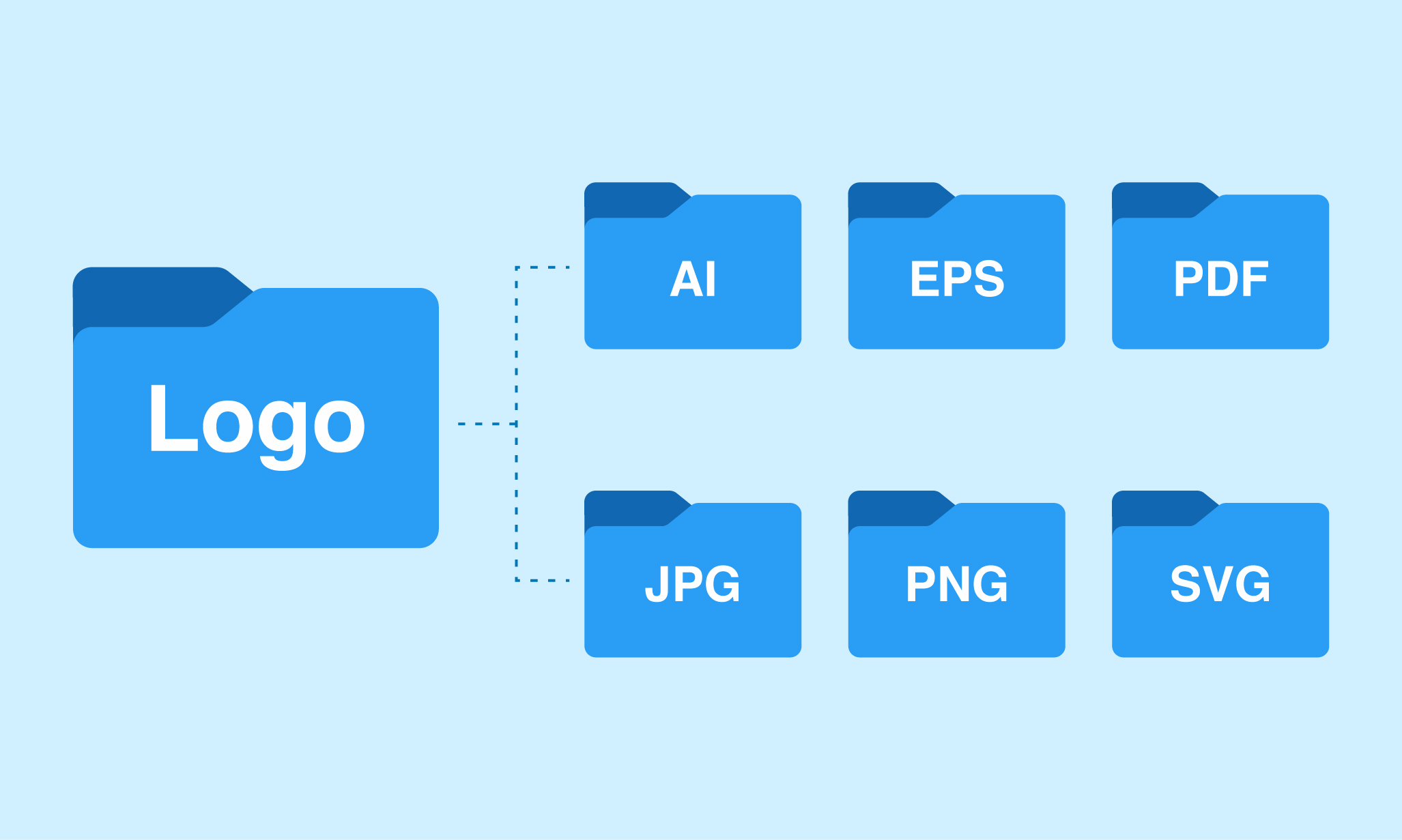We offer variety of affordable design services per project as well as monthly outsourcing packages. Let's get in touch today!
Karadjordjev trg 4
11000 Belgrade
Serbia
So, you’ve just received your brand-new logo — exciting! But then you open the folder, and suddenly you're staring at a bunch of mysterious file types: .AI, .EPS, .PDF, .PNG, .SVG, .JPG… What do they all mean? Which one should you use on your website? Can you send the right one to your printer?
Don't worry — we’ve got you covered.
In this guide, we’ll walk you through the most common logo file formats, what each one is best for, and why having the right version matters.

Before diving into file extensions, you need to understand two key categories of image formats:
Examples: .AI, .EPS, .SVG, .PDF
Examples: .JPG, .PNG, .GIF


| Website header/logo | SVG, PNG |
| Business cards or brochures | PDF, EPS |
| Social media profile images | PNG, JPG |
| Embroidery or merchandise | EPS, PDF |
| Presentations | PNG, PDF |
| Sending to a designer/printer | AI, EPS, PDF |
When you work with a professional designer (like us!), you should receive a full set of logo files tailored to different platforms and use cases. A complete logo package ensures your brand looks sharp and consistent everywhere — from Instagram stories to billboards.
At Brandbusters, we always provide:
Logo file formats might seem confusing at first, but they’re essential for keeping your brand flexible, scalable, and polished. With the right files in your toolkit, you’ll never have to scramble before a big print job or worry about blurry logos online.
Still unsure which file to use? Just ask — we’re here to help.
Get in touch and let’s make it happen.